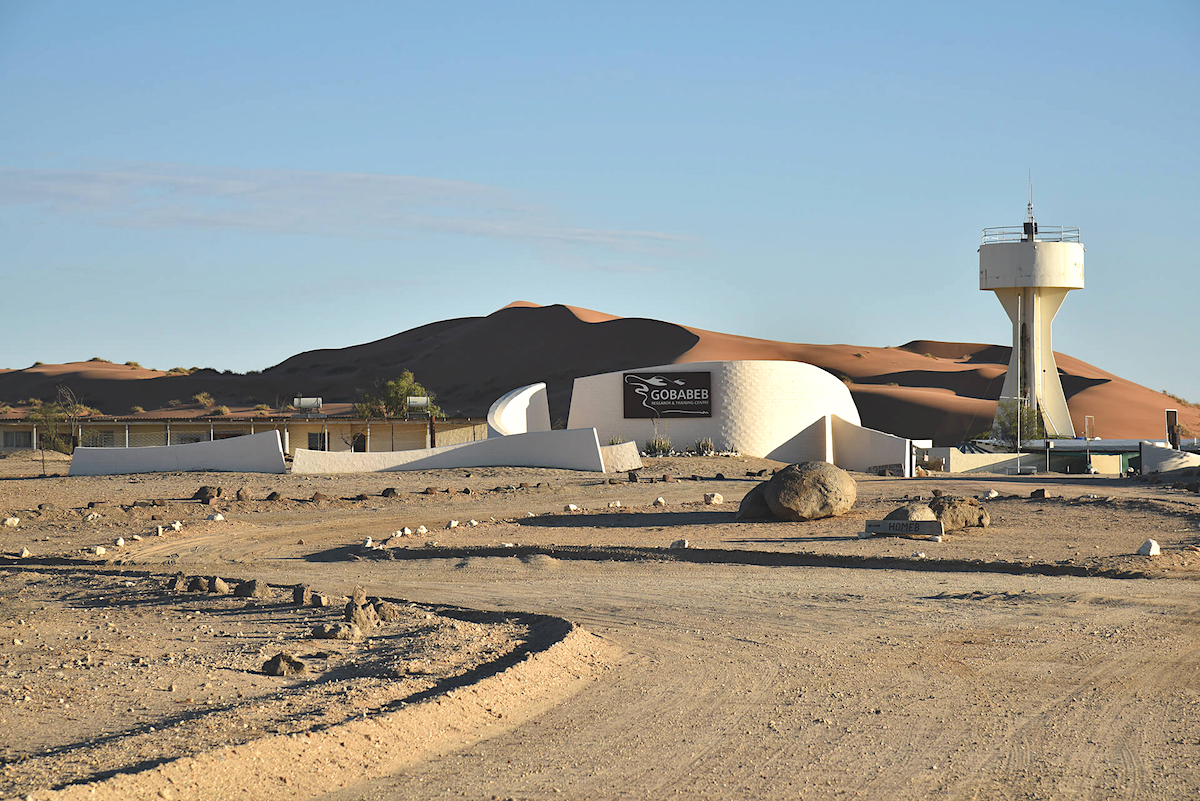

Gobabeb at 60
Text Kirsty Watermeyer
From the Autumn 2023 issue
Research at the Gobabeb Namib Research Institute aims to increase knowledge about arid ecosystems and their amazing diversity, and this year marks 60 years that Gobabeb has been doing exactly that.
As a research station, Gobabeb is renowned for conducting analyses of the ecology of deserts in southern Africa and specifically the organisms of the Namib. These are key explorations which have taken place there.
The hundreds of scientists visiting Gobabeb each year and the many publications they produce have made this station in the Namib Desert synonymous with quality desert research.
Thanks to the research at Gobabeb, the world’s knowledge about desert animals as well as plants and their adaptation to extreme conditions has been vastly expanded.
Gobabeb was established in 1962. Prior to that, teams of scientists from several countries spent over a decade on scientific explorations that crisscrossed the arid west of southern Africa. In 1959 they stumbled upon what was to become Gobabeb in the very middle of the Namib Desert. They reported that the scientific potential of the site was immediately obvious and that they set out to investigate further with great enthusiasm.
From the start Gobabeb was intended to be available to other accredited institutions or individuals wishing to conduct desert research there.
Gobabeb has undergone many name changes over the years, among them Namib Desert Research Association and Desert Ecological Research Unit before the proud name of Gobabeb Namib Research Institute was adopted. This research institute is a thriving yet modest (by international standards) field station off the beaten track, roughly 100 km southeast of Walvis Bay.
In its early days the first eco-physiological research’ main objective was to understand how organisms in the Namib Desert coped with water scarcity and heat. This set the stage for desert ecology to take off as Gobabeb’s claim to international scientific fame.
Gobabeb came to be regarded as a window into the fascinating mysteries of the dunes. As access was restricted to staff, scientists and park officials, the research station itself acquired an aura of mystery.
A key element of success has always been the constant stream of students and interns who became temporary residents at Gobabeb for several months or even years. Interns are the backbone of ongoing projects. Usually they conduct their own studies for postgraduate qualifications. These “alumni” further spread the word of Gobabeb, the research destination of choice.
Apart from the many notable international scientists that the centre has attracted, several great scientists have held the reins at Gobabeb. Under Mary Seely’s directorship the 1970s and 1980s became Gobabeb’s “first golden age”. During this time Gobabeb staff and associated scientists and students generated a staggering 490 publications, mostly on climate, geomorphology, geology, conservation, biodiversity, ecology, ecophysiology, archaeology and palaeontology.
Remarkable discoveries were made, exemplified by tenebrionid beetles harvesting atmospheric water through fog-basking and constructing tiny trenches in the dunes to catch fog. Or lizards exploiting surface heat through thermal ‘dancing’, and spiders using heat to kill their prey.
The most recent decade at Gobabeb can best be described as a consolidation of the efforts of earlier years, with a revival and expansion of research – its signature strength. At the same time, great value is set on education and outreach. The emphasis is also on grooming promising young science talents in tertiary postgraduate level.
From a visionary idea and the grit to make it happen, to the tenacious responsiveness to change that has underpinned the continuation of Namib Desert science over six decades, Gobabeb has built a proven track-record and earned global recognition as one of the world’s oldest field stations for arid land research. It stands as a beacon of scientific endeavour and is poised to continue this legacy into the future.
More to explore


Lüderitz Nest Hotel: A New Era of Elegance on Namibia’s Shores




